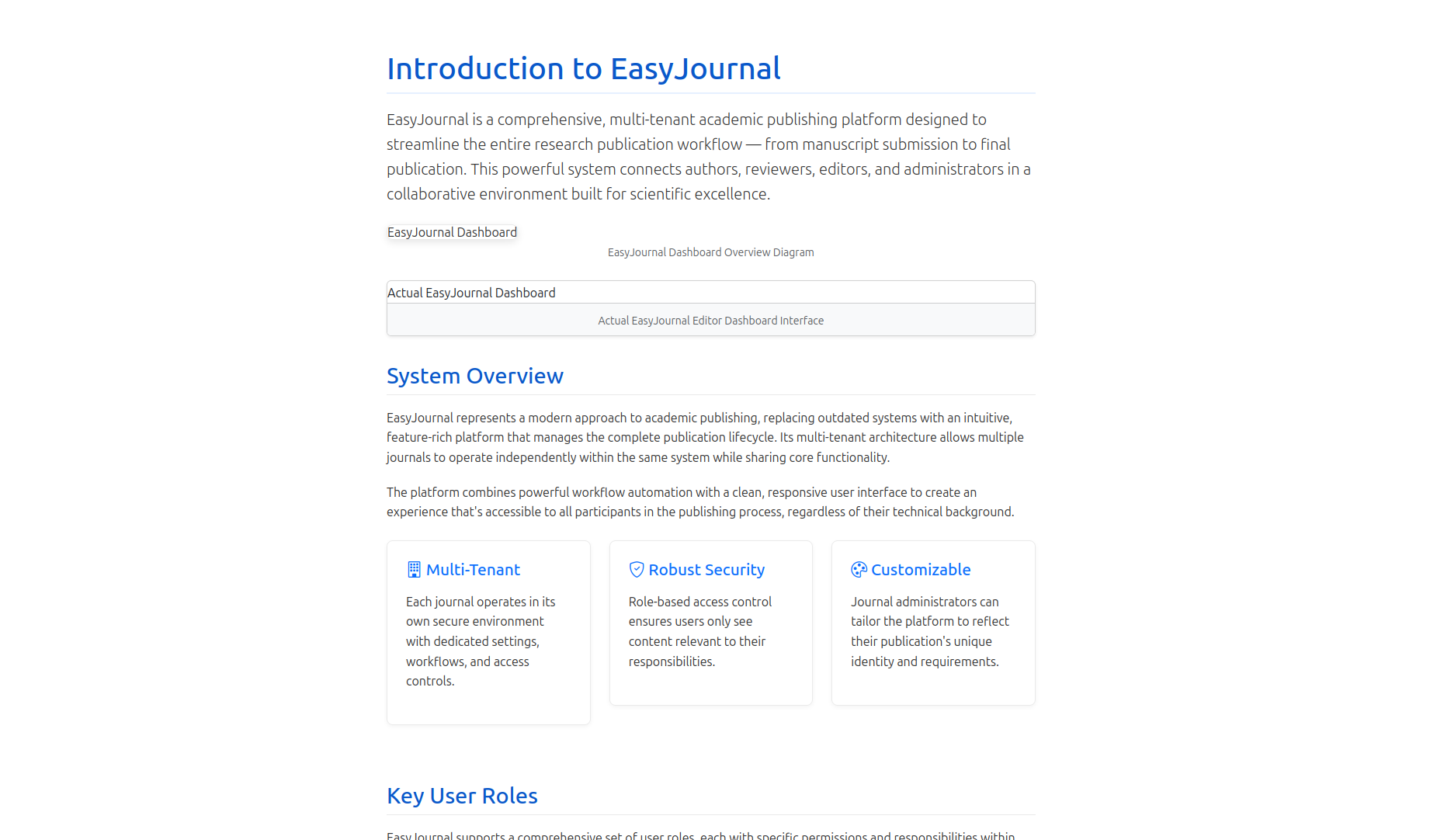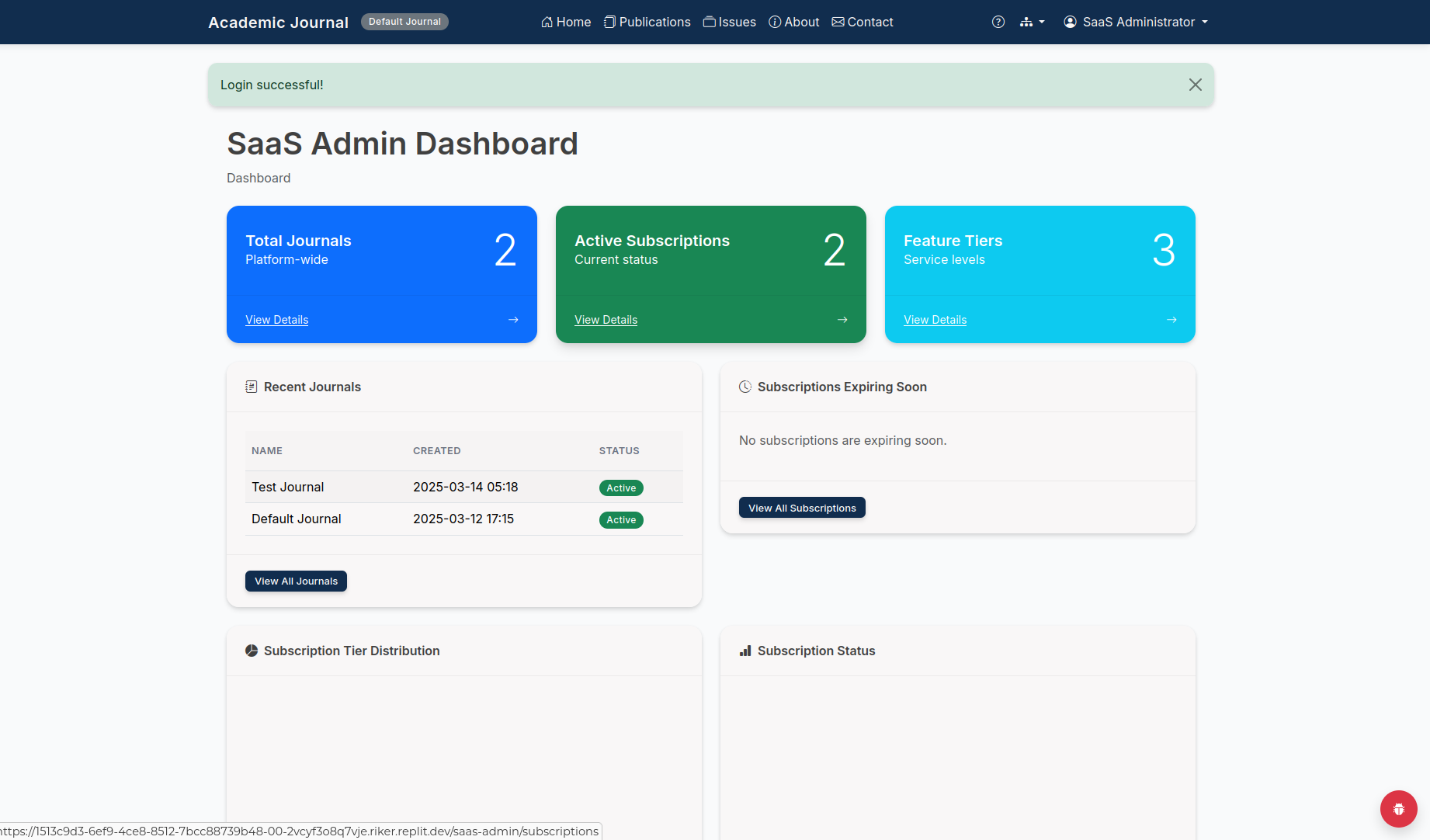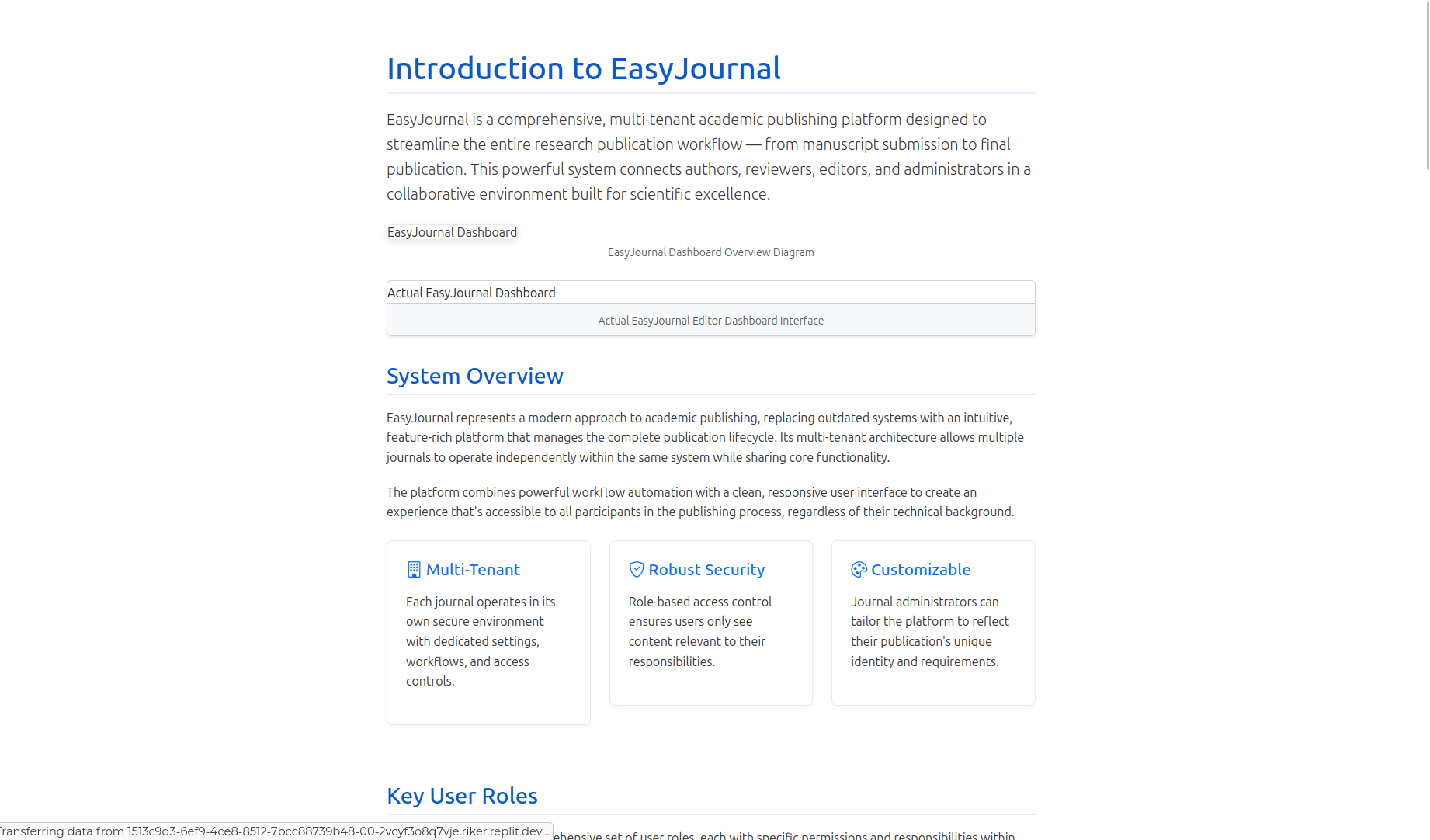Bug Reporter Guide
Bug Reporter Guide
The Bug Reporter is a convenient tool built into EasyJournal that allows users to report issues, errors, or unexpected behavior directly from any page in the application. This guide explains how to use the Bug Reporter effectively to help improve the system.
Bug reporting is essential for maintaining and improving EasyJournal. By reporting issues, you help the development team identify and fix problems, ultimately creating a better experience for all users.
Accessing the Bug Reporter
The Bug Reporter is accessible from any page within EasyJournal through a small bug icon that appears at the bottom right corner of your screen.

The Bug Reporter button is available on all pages
Using the Bug Reporter
When you encounter an issue or unexpected behavior in EasyJournal, follow these steps to report it:
This will open the Bug Report modal dialog.
The title should be concise but informative. For example: "Unable to upload PDF files in submission form" is better than "Upload not working."
In your description, try to include:
- What you were trying to do when the issue occurred
- What you expected to happen
- What actually happened instead
- Any error messages you saw
- Steps to reproduce the issue

The Bug Report modal with fields for title and description
The Bug Reporter can automatically include technical information from your browser console logs. This information can be very helpful for developers to diagnose the issue. We recommend keeping this option enabled unless you have privacy concerns.
After submission, you'll see a confirmation message that your report has been received.
Including clear, detailed information in your bug report significantly increases the chances that developers can quickly identify and fix the issue. The more context you provide, the better!
What Happens After You Submit a Bug Report?
Once you submit a bug report, the following process takes place:
Receipt and Logging
Your bug report is immediately logged in the system with a unique identifier. The system also captures technical information about your browser, operating system, and the page where the issue occurred.
Review and Prioritization
A system maintainer reviews your report, categorizes it, and assigns it a priority level based on the severity of the issue and how many users it might affect.
Resolution
The development team works to fix the issue. Depending on the complexity, this may take varying amounts of time.
Deployment
Once fixed, the solution is deployed to the EasyJournal system, usually as part of a regular update.
Tips for Effective Bug Reporting
Do
- Be specific about what happened
- Include step-by-step reproduction instructions
- Mention your browser and device type
- Include console logs when possible
- Report each separate issue in its own report
Don't
- Use vague descriptions like "it's not working"
- Include multiple unrelated issues in one report
- Include sensitive personal or research data
- Submit duplicate reports for the same issue
- Use bug reports for feature requests
The Bug Reporter is designed for reporting technical issues with EasyJournal. For questions about manuscript submissions, peer review, or other journal processes, please contact the editorial team directly.
For System Maintainers: The Bug Report Dashboard
If you have a maintainer role in EasyJournal, you'll have access to the Bug Report Dashboard, where you can view, manage, and resolve reported issues.
System maintainers can access the dashboard by logging in with maintainer credentials (maintainer@example.com) and navigating to the "Bug Reports" section in the admin menu.

The Bug Report Dashboard for System Maintainers
The Dashboard provides several key features:
Bug Report List
View all submitted bug reports with filtering options for status (open/resolved), date, and priority.
Search and Filter
Quickly find specific issues using the search functionality or apply filters to narrow down the list.
Report Details and Management
Access full details of each report, including user information, console logs, and system details. Add internal notes, update status, and assign priority levels.
Resolution Workflow
Mark reports as resolved once fixes have been implemented, with options to reopen if necessary.
Conclusion
The Bug Reporter is a valuable tool that empowers all EasyJournal users to contribute to the continuous improvement of the platform. By submitting clear, detailed bug reports when you encounter issues, you help ensure that EasyJournal remains a robust, reliable platform for academic publishing.
If you have questions about using the Bug Reporter or need assistance with a specific issue, please contact our support team at support@easyjournal.example.com.